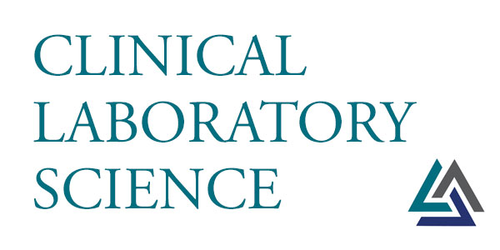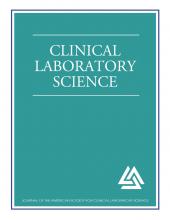This article requires a subscription to view the full text. If you have a subscription you may use the login form below to view the article. Access to this article can also be purchased.
- Michelle Renee Campbell, MLS (ASCP)
- Masih Shokrani, Ph.D. MT (ASCP)⇑
- Address for Correspondence: Masih Shokrani, Ph.D. MT (ASCP), Associate Professor, Medical Laboratory Sciences Program, Northern Illinois University, DeKalb, IL, 60115-2828, 815-753-6323, mshokrani{at}niu.edu
Describe the role of HbA1c in the diagnosis and management of diabetes mellitus.
Describe the principle of immunoassay, affinity chromatography, high-pressure liquid chromatography, boronate affinity chromatography and isoelectric focusing for HbA1c measurements and the effects of hemoglobin variants on each methodology.
Identify genetic variants and their effect on HbA1c measurements.
Describe the drawbacks on point-of-care testing for HbA1c.
Discuss the use of other glycated protein testing.
Extract
INTRODUCTION Managing diabetes mellitus requires consistent regulation and monitoring of blood glucose levels. HbA1c serves as a measurement for the diagnosis and monitoring of diabetes mellitus patients by determining long-term blood glucose control. Various methodologies of measuring HbA1c are utilized in laboratories throughout the world and may not produce equivalent results based on the effects of hemoglobin variants present in patients. The need to standardize HbA1c methodologies based on the effects of these variants is apparent. Point-of-care testing, as well as the measurement of different glycated proteins, can be examined as possible alternatives to the conventional HbA1c measurements.
The management of diabetes mellitus focuses on controlling the blood glucose levels. Consistent maintenance of the blood glucose concentration to levels at or near the nondiabetic range is optimal. It is also important to avoid significant fluctuations in the blood glucose. HbA1c serves as a longitudinal measurement for comparison of diabetes mellitus control over time. Glycosylated hemoglobin is measured to provide a picture of the overall management of blood glucose over the past 2 to 3 months.1 Elevated HbA1c levels have been correlated with an increased risk for type 2 diabetes mellitus, as well as cardiovascular disease.2 Measurements are taken at 2-3 month intervals, as that is the normal lifespan of red blood cells (RBC). HbA1c levels also are determined by the rate of erythrocyte synthesis/death. The life of RBC of diabetic patients is decreased, therefore presenting the possibility of falsely decreased HbA1c measurements, which cannot be accounted for in any HbA1c…
ABBREVIATIONS: HbA1c - Hemoglobin A1c, eAG - Estimated average glucose, EDTA - Ethylenediaminetetraacetic Acid, HPFH - Hereditary persistent fetal hemoglobin, HPLC - High-pressure liquid chromatography, IEF - Isoelectric focusing, pI - Isoelectric point, NGSP - National Glycohemoglobin Standardization Program, DCCT - Diabetes Control and Complications Trial, POCT - Point-of-care testing, SNPs - Single nucleotide polymorphisms, CLSI - Clinical Laboratory Standard Institute, GA - Glycated Albumin, HbF - Fetal hemoglobin, RBC - Red blood cell, IFCC - International Federation of Clinical Chemistry
- INDEX TERMS
- HbA1c Testing
- Hemoglobin Variants
- HbA1c Methodologies
- Standardization for HbA1c
- Hb variants and HbA1c Measurements
- Point-of-care Testing
- Glycated Albumin Testing
Describe the role of HbA1c in the diagnosis and management of diabetes mellitus.
Describe the principle of immunoassay, affinity chromatography, high-pressure liquid chromatography, boronate affinity chromatography and isoelectric focusing for HbA1c measurements and the effects of hemoglobin variants on each methodology.
Identify genetic variants and their effect on HbA1c measurements.
Describe the drawbacks on point-of-care testing for HbA1c.
Discuss the use of other glycated protein testing.
- © Copyright 2016 American Society for Clinical Laboratory Science Inc. All rights reserved.






